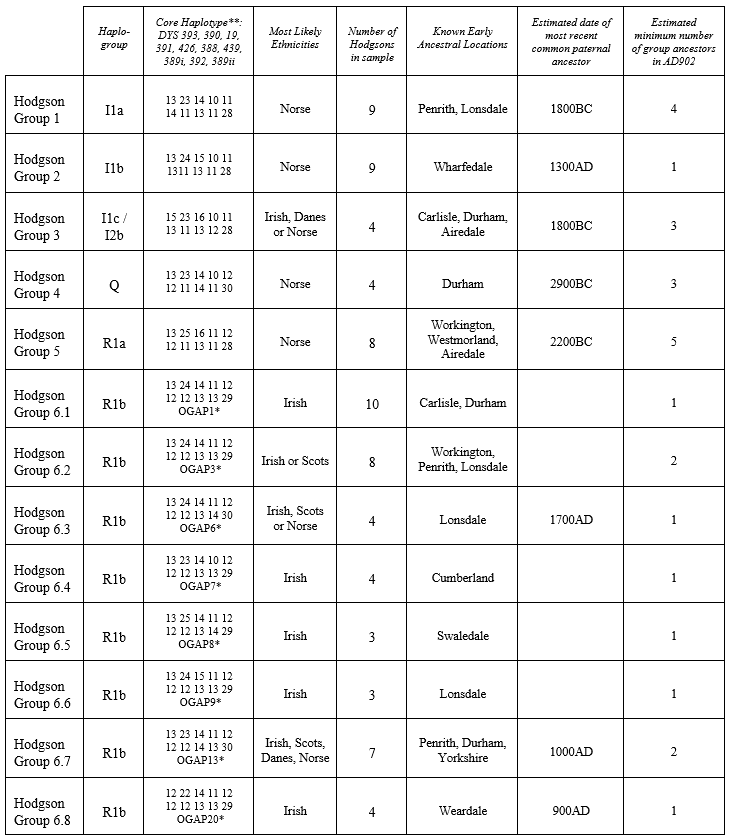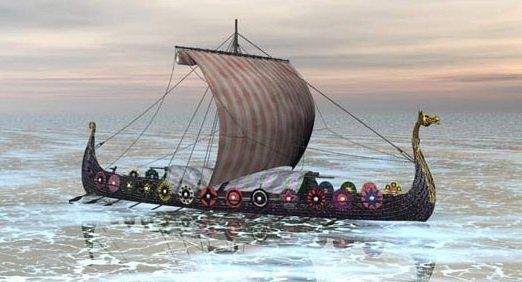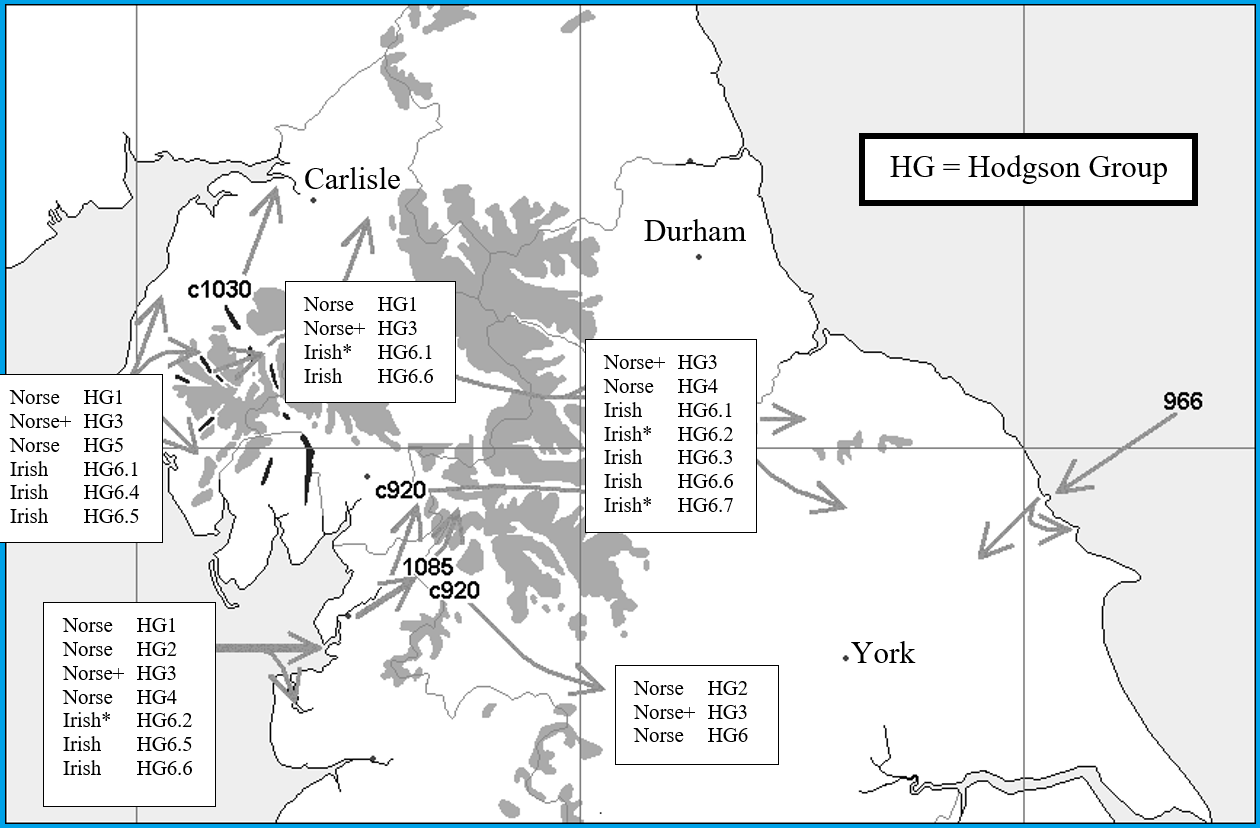Hodgson DNA Analysis
The Use and Abuse of DNA Analysis

Since its development in the 1990s, and its growing use thereafter, DNA testing in ancestry research has become controversial.
DNA research is a proven tool for finding relatives and helping to build up family trees. But others have turned to DNA analysis in attempts to establish that they are members of some favoured 'race'. This has become more sinister and dangerous with the rise of white supremacist groups in Europe, North American and elsewhere.
Some of these extremists believe that our characters and abilities are largely determined by our genetic inheritance. This fallacy has been disproved by thorough anthropological research, dating from before the beginning of the twentieth century. We now know that, while inherited nature can have some effects, the influence of nurture and the environment are far more important in determiming our traits and abilities.
There are other major limits to what we can derive from DNA testing. This is partly because the standard tests are typically on tiny and often inconconsequential segments of our DNA.
Some commercially available DNA testing is based on Y-DNA or mitochondrial DNA. Humans have 23 pairs of chromosomes - a total of 46. Twenty-two of these pairs are similar, in both males and females. The 23rd pair, the sex chromosomes, differ between males and females. Here females have two copies of the X chromosome, while males have one X and one Y chromosome.
Hence a Y-DNA test on a male will be on only about 2 per cent his overall DNA. The Y-DNA is passed from father to son in every generation. It changes only occasionally, through slight mutations. Much of it is so-called 'junk DNA' and plays little or no part in forming our bodily or mental traits. It can tell us something important about our male-to-male ancestry and origins but it cannot tell us to what 'race' we belong, even if the concept of 'race' had a robust meaning.
Almost all of our DNA is a mixture taken from both our parents. About 98 per cent of male DNA and all of female DNA mingle randomly through the process of sexual reproduction.The realities of human intermingling and reproduction have made it impossible to identify pure or typical racial types.
Tests on mitochondrial DNA examine material inherited by men and women from their mothers. They can be useful to examine female-to-female ancestry and origins. But this too is only a small part of our DNA and it cannot be used to establish a 'race'.
As homo sapiens we are all descended from a relatively small group that moved out of Africa and spread north, west and east, roughly 80,000 years ago. Dispersal, natural selection in different environments, and other factors led to some genetic variations between relatively isolated populations. But genetic diversity within each of these populations was as important as diversity between them. Differences became even more blurred as peoples migrated and intermingled with others.
Recent studies of the human genome throughout the world have destroyed the old racial theories and classifications. It is widely reported that any two individuals selected at random from the world population will be more than 99 per similar in their DNA. Up to the middle of the twentieth century, and not simply in Nazi Germany, pseudo-scientific eugenicists and craniologists gathered empirical data on head shape, skin tone and hair colour in attempts to establish racial identities. Modern DNA research has exploded these racial myths.
Careful use of DNA analysis can help to direct our archival research and find our relatives. But beyond a few generations into the past, the records become scarce and then disappear. In any case, tracing our male-to-male ancestry back to (say) 1400 AD will involve about 24 generations. Literally millions of people living at that time would be our ancestors. The one male ancestor we might find (perhaps with our surname) would be one among several million others.
But as long as we are aware of these limitations, and steer widely clear of the noxious racism and snobbery that still haunt matters of ancestry and lineage, then we can find interesting stories about our past. These will be only a small part of our history and legacy.
Our individual stories are always tied up with all our sisters, brothers and ancestors, spread broadly among all humanity. We are all descended from that small band of migrants that moved out of Africa about 80,000 years ago.
We are all mongrels.
We are all part of one big human family.
We must cooperate and work together for our common survival and our wellbeing on this planet.
Principal Hodgson Groups and Haplotypes
The data below are upadated from a table published in G. M. Hodgson, Hodgson Saga,
2008, p. 42. (A free pdf copy of this book can be obtained my emailing its author.)
The table shows the analysis of a sample of 75 Hodgson males. It provides evidence of Viking-Norse Y-DNA among 34 Hodgsons, while 41 others (with Y-DNA in groups 6.1 to 6.8 inclusive) are members the common R1b haplogroup that is predominant in Ireland and other parts of Britain, France and Spain.
In Hodgson Saga
it is suggested that some Irish male ancestors of Hodgsons may have joined the Viking settlers in parts of Ireland and moved with them to England in their recorded invasions of the northwest of England from about 902 AD.

Table of Major Hodgson Groups and Y-DNA Haplotypes
Notes to the Table:
*
After Campbell (2007). ‘OGAP’ means ‘Oxford Genetic Atlas Project’.
**
A haplotype is sub-classification within a haplogroup. Oxford Ancestors (OA) and Family Tree DNA (FT) calculate markers DYS389i and DYS389ii differently. The FT notation is used here. From FT DYS398i subtract 3 to get the OA DYS398i value. Subtract FT DYS389i from FT 389ii to obtain the OA 389ii value.

The Hodgson Y-DNA Evidence is Consistent with Irish-Norse Origins
The overall result we draw from the DNA evidence is that the Hodgsons are drawn foremost from a mixture of Norse and Irish ethnic sources. This is entirely consistent with Viking, Irish-Norse origins and with the evidence on the early locational distribution of the Hodgson surname.
The table above also shows the principal known locations of the ancestors of the participants in the Hodgson DNA project. For each location mentioned in this column, persons in the group can trace back their paternal ancestry two or more generations to the district that is cited.
Hodgson Groups 1, 2, 4 and 5 are likely to be Norse. Hodgson Group 3 could in part be Danish or Irish. We know that there were Danish adventurers among the Irish-Norse who left Ireland and invaded England in 902. The invaders included ancestors of other Hodgsons with Irish male ancestry.
We may speculate that members of each of the 13 Hodgson Groups may be descended from Irish-Norse individuals who arrived in Cumberland or Lonsdale in the early tenth century. Locations in County Durham and North Yorkshire were likely to be settled by Irish-Norse families migrating eastwards across the Pennines.

Conjectural Migration of the Ancestors of Some Hodgson Groups
The table above shows the conjectural migration of the Irish-Norse ancestors of many Hodgsons, into England and many moving eastwards across the Pennines. A minority may have arrived from Scandinavia on the east coast of England.
We may speculate that members of each of the 13 Hodgson Groups may be descended from Irish-Norse individuals who arrived in Cumberland or Lonsdale in the early tenth century. Locations in County Durham and North Yorkshire were likely to be settled by Irish-Norse families migrating eastwards across the Pennines.
Bibliography
Campbell, Kevin D. (2007) ‘Geographic Patterns of Haplogroup R1b in the British Isles’,
Journal of Genetic Genealogy, 3, pp. 1-13, www.jogg.info/31/campbell.htm .
Falkus, Malcolm and Gillingham, John (eds) (1981)
Historical Atlas of Britain (London: Grisewood and Dempsey).
Ferguson, Robert (1858) English Surnames and their Place in the Teutonic Family
(London: George Routledge).
Hines, John (1984)
The Scandinavian Character of Anglian England in the Pre-Viking Period, British Archaeological Report 124, Oxford, pp. 277-8.
Oppenheimer, Stephen (2006) The Origins of the British
(London: Robinson).
Reich, David (2018) Who We Are and How We Got Here: Ancient DNA and the New Science of the Human Past
(Oxford and New York: Oxford University Press).
Sims-Williams, Patrick (2020) ‘An Alternative to “Celtic from the East” and “Celtic from the West”’, Cambridge Archaeological Journal, 30(3), pp. 511-529.
Treharne, R. F. and Fullard, Harold (eds) (1963) Muir’s Historical Atlas: Ancient and Classical, sixth edition (London: George Philip).
